Choosing between 1080p and 4K resolution can be confusing. Both offer unique benefits and cater to different needs.
1080p, also known as Full HD, is widely used and supported. It's affordable and sufficient for most casual viewing.
On the other hand, 4K, or Ultra HD, provides sharper images with more detail. It's ideal for larger screens and high-end content.
Knowing the differences can help you decide. Whether for gaming, streaming, or professional use, each resolution has its place.
Let's explore which resolution might be better for you.
Display resolution refers to the number of pixels on a screen. More pixels mean better clarity and detail.
1080p, known as Full HD, has 1920x1080 pixels. This is a common choice for TVs, monitors, and projectors.
4K, or Ultra HD, includes 3840x2160 pixels. It quadruples the pixel count of 1080p, providing a richer picture.
Understanding these terms can be challenging, so here's a quick breakdown:
UHD and 4K are often used alternately. 4K offers more detail, suitable for larger displays. Meanwhile, HD and 1080p work well on smaller screens and are more budget-friendly. Picking the right resolution depends on what you need and what your devices can handle.
1080p resolution, also called Full HD, is a staple in modern display technology. It features a pixel count of 1920x1080, ensuring clear image quality without breaking the bank.
This resolution is widely used. From TVs to computer monitors, 1080p is everywhere. It’s cheap and easy to get, which is why many people like it.
Consider these essential points about 1080p:
Whether for casual viewing, gaming, or presentations, 1080p offers a solid balance of quality and price. Many people find it good enough for everyday use, as it performs reliably on different platforms.
4K resolution, often known as Ultra HD, marks a significant jump in picture clarity. It offers a resolution of 3840x2160 pixels, providing four times the detail of 1080p. This higher pixel density results in crisper and more lifelike images.
For those who prioritize visual excellence, 4K is a compelling choice. It's ideal for large displays, where pixel details are more evident. With expanding content and decreasing costs, 4K is becoming more accessible to consumers.
Key points about 4K resolution include:
Adopting 4K requires consideration of compatible hardware and content availability. Yet, for those seeking top-tier visuals, 4K provides an immersive and breathtaking experience.
The debate between 1080p and 4K centers on resolution and clarity. 1080p, with its 1920x1080 pixels, is known as Full HD, while 4K offers Ultra HD at 3840x2160 pixels, quadrupling the pixel count.
One significant difference is image sharpness. 4K delivers finer details and a crisper picture, especially noticeable on larger screens. This makes 4K ideal for home theaters and professional settings requiring high fidelity.
Cost is another factor. 1080p displays tend to be more affordable. They are perfect for budget-conscious consumers, ensuring good quality without breaking the bank. Conversely, 4K displays, while initially costlier, are becoming more budget-friendly.
When it comes to device support, 1080p works with more devices.
It works with many older devices, but 4K needs newer equipment and cables to look its best.
Key differences include:
In the end, the choice depends on what you need and like. You should think about details, if it works with your devices, and the costs.
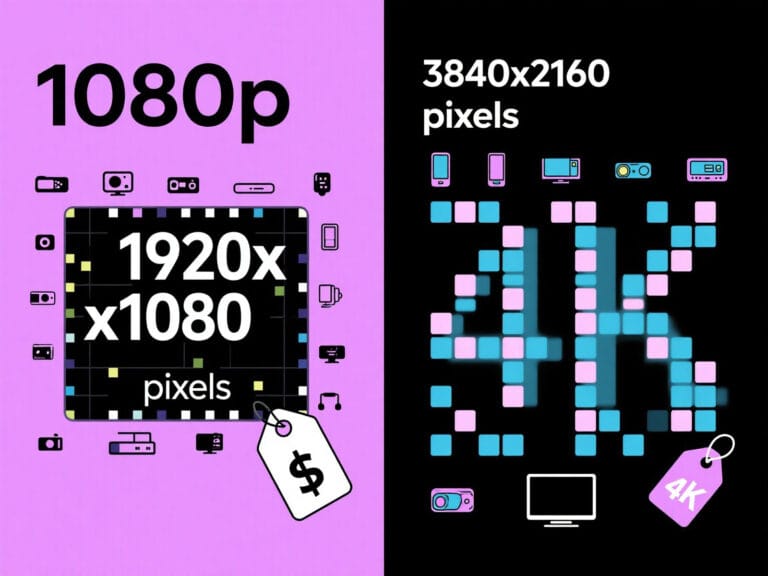
When it comes to picture quality, 4K stands out. It looks much sharper and more detailed than 1080p. You can really see this improvement on bigger screens. The higher pixel density makes the images clear and realistic.
4K's superior resolution enhances more than just the image detail. It significantly improves color accuracy and contrast. With 4K, shadows are deeper and highlights brighter, adding to the overall visual impact. This makes it ideal for content like nature documentaries and blockbuster movies.
However, on smaller screens, the difference in quality may be negligible. The benefits of 4K might not be as evident unless you sit close to the screen.
Here's what makes 4K superior in picture quality:
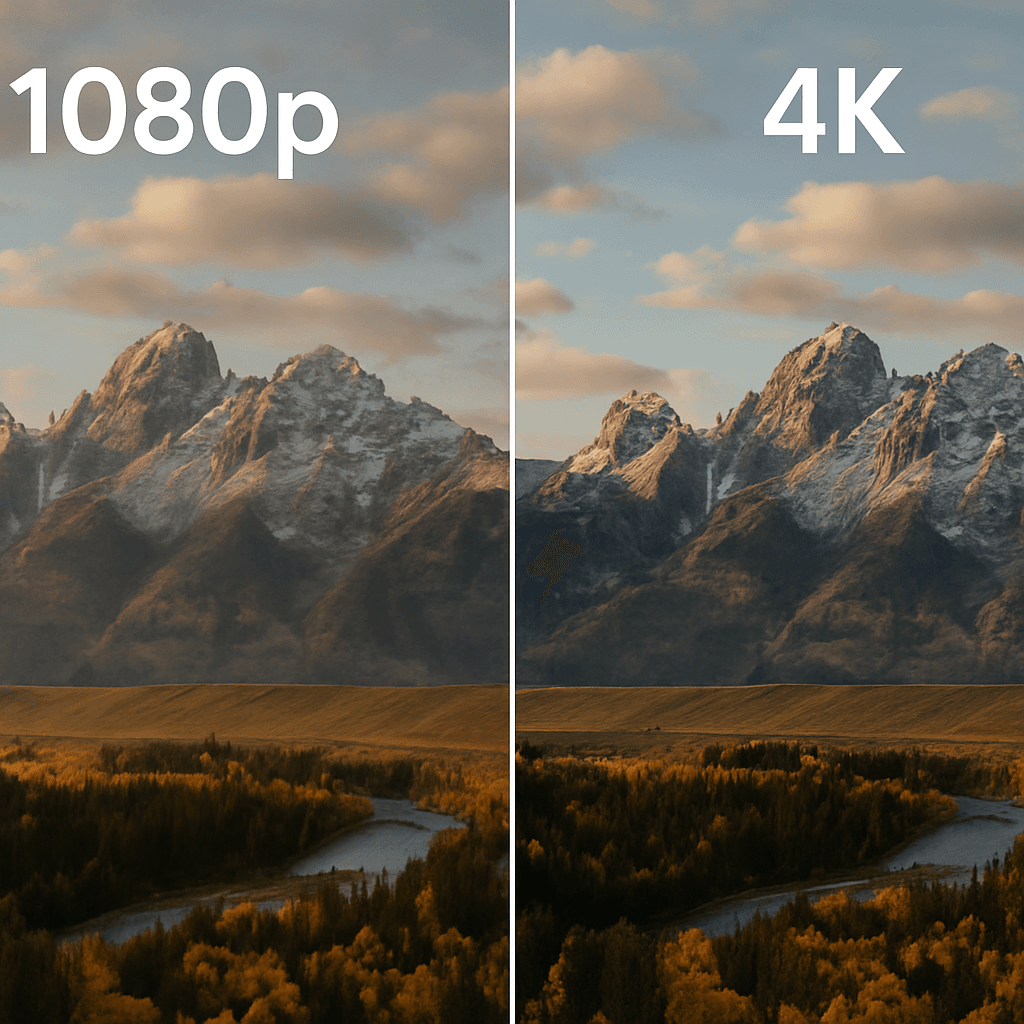
Choosing between these resolutions often depends on your screen size and viewing habits. For most people, 4K will give you a more engaging and better viewing experience.
Streaming has changed a lot, and there's more and more UHD content available. Platforms like Netflix and Amazon Prime now offer numerous shows in 4K quality. This access allows viewers to enjoy stunning visuals with almost cinematic clarity.
However, HD content remains dominant, particularly for standard broadcasts and online videos. 1080p is more than sufficient for the majority of everyday viewing needs. It is widely supported across many devices, making it a versatile choice.
Choosing between UHD and HD depends on several factors:
Selecting the right projector for your home theater depends on your preferences. A 4K projector offers sharper images, making it ideal for larger screens. The enhanced 4K quality creates an immersive viewing experience with vibrant colors and fine details.
In contrast, 1080p projectors are more budget-friendly and easier to set up. They deliver clear pictures for standard home theaters and work well in smaller spaces. This makes them a practical option for users looking to save money without sacrificing too much quality.
When deciding between 1080p and 4K projectors, consider these aspects:
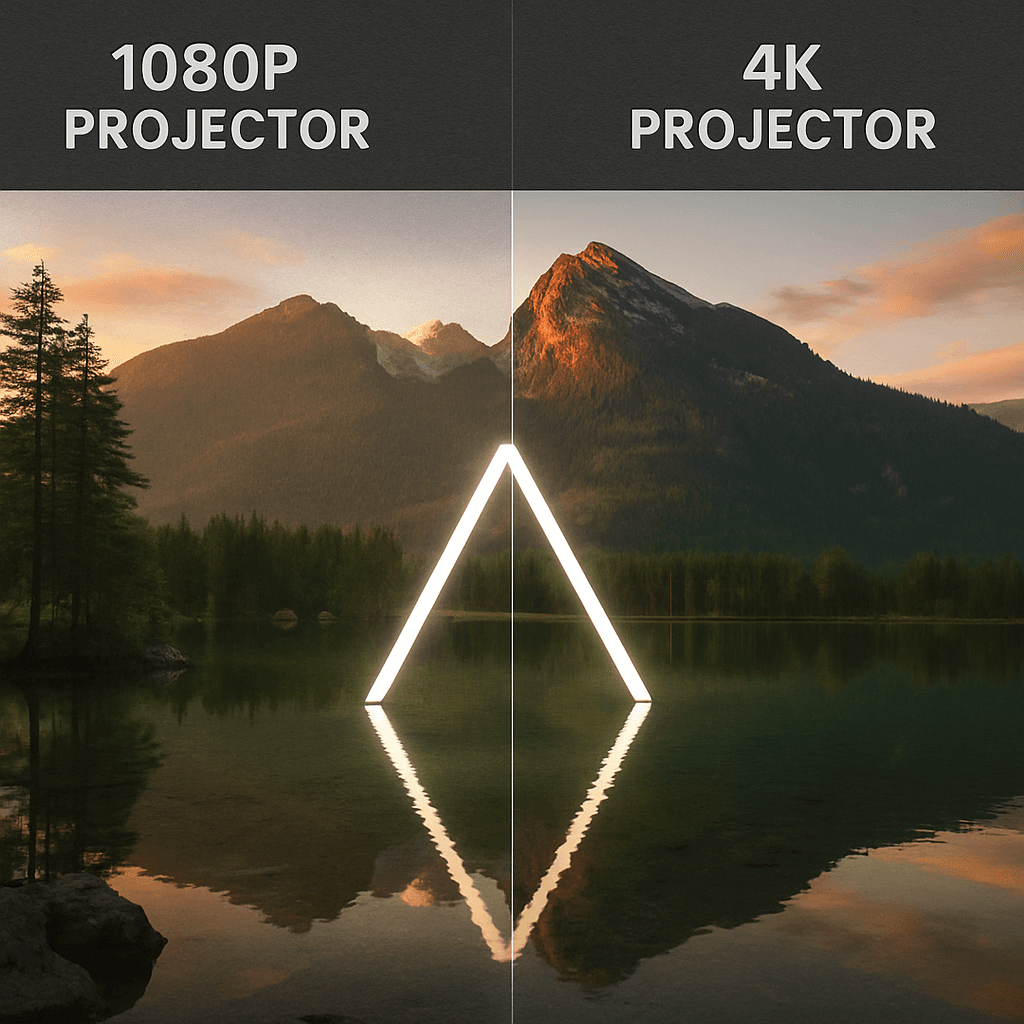
Gaming in 1080p allows for higher frame rates, which can be crucial for competitive play. Lots of gamers like 1080p for its smooth performance and quicker response. Additionally, 1080p gaming is less demanding on your hardware, making it accessible even on older machines.
On the other hand, 4K gaming delivers a visual treat with stunning clarity and detail. The 4K quality brings virtual worlds to life, offering a truly immersive experience. However, this comes at the cost of requiring powerful graphics cards and modern systems.
When choosing between 1080p and 4K for gaming, consider these factors:
A balance of performance and visuals will determine your ideal gaming experience.
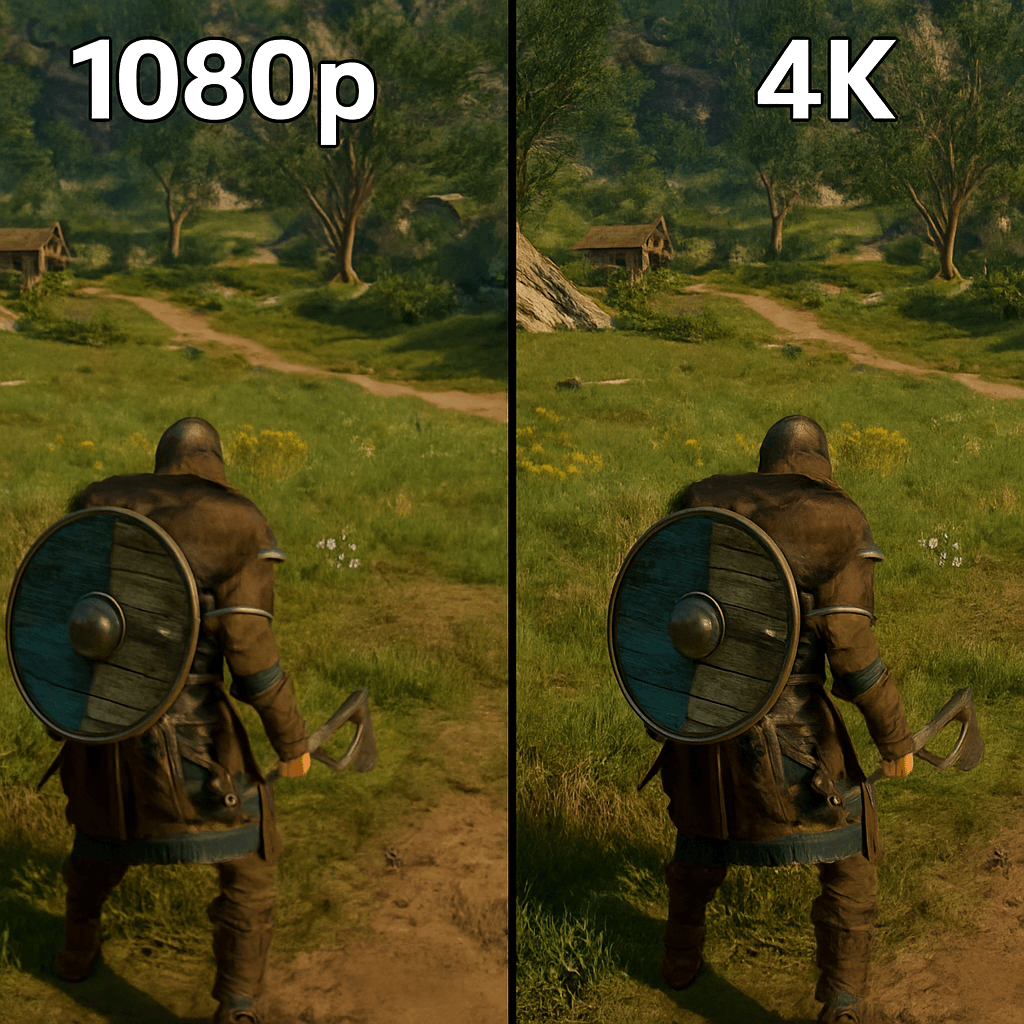
The choice between 1080p, 1440p, and 4K is crucial for balancing quality and performance.
1440p is a good balance. It looks better than 1080p but isn’t as demanding as 4K. However, it needs some thought.
Each resolution has its strengths:
Choosing depends on your priorities, whether it’s performance, graphics, or hardware capabilities.
How far away you sit makes a big difference in how much you'll notice resolution improvements. 4K's finer details are more noticeable at closer ranges, enhancing picture clarity.
When deciding on a display size, consider your room's space. Larger screens make the most of 4K's resolution, especially in expansive areas.
Perception of detail varies with eye sensitivity and distance. Here's a quick guide:
These factors help you choose the right screen for what you need.
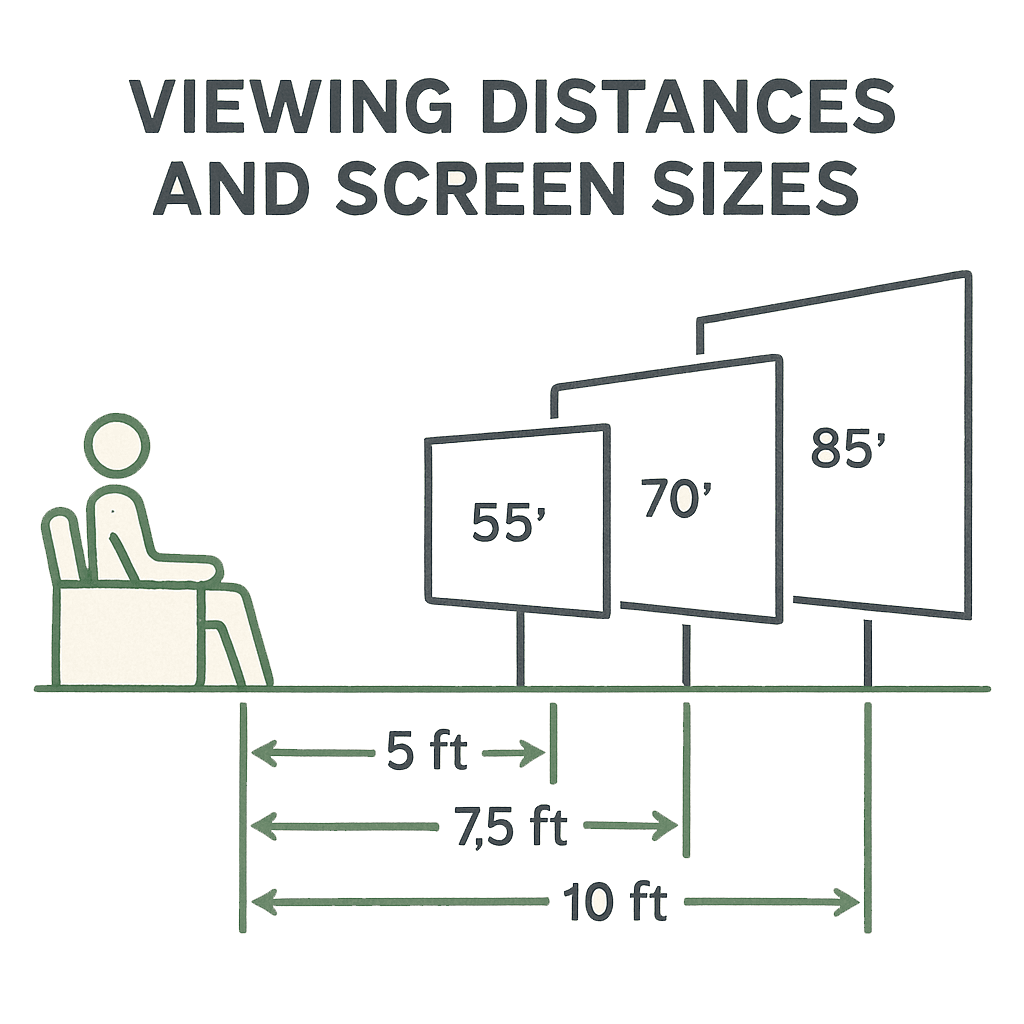
Choosing between HD and 4K significantly impacts your budget. 1080p displays are generally more affordable, appealing to cost-conscious buyers.
However, as technology advances, 4K options become more accessible. Investing in a 4K display might seem costly, but it future-proofs your setup.
Consider the following aspects when deciding:
These things help you weigh saving money now against getting better long-term benefits.
When it comes to upscaling, 4K displays can enhance 1080p content. However, the quality of upscaling varies by device. Ensuring compatibility is crucial for a seamless experience with 4K.
System requirements for 4K can be demanding. You need the right hardware and cables for optimal performance. Consider:
These elements are key to optimizing your 4K viewing experience.
Choosing between 1080p and 4K depends on your needs and budget. Each resolution suits different situations.
Here are key factors to consider:
Weigh these elements to decide which resolution fits your lifestyle best.
Deciding between 1080p and 4K hinges on your unique needs. Both have distinct benefits based on usage and budget.
1080p is a good choice because it is affordable and works well. Meanwhile, 4K excels with superior detail, offering a more immersive experience. Think about what you care about most in your daily viewing, and consider if you want to be ready for future tech. Figuring out your priorities will help you pick the best resolution.